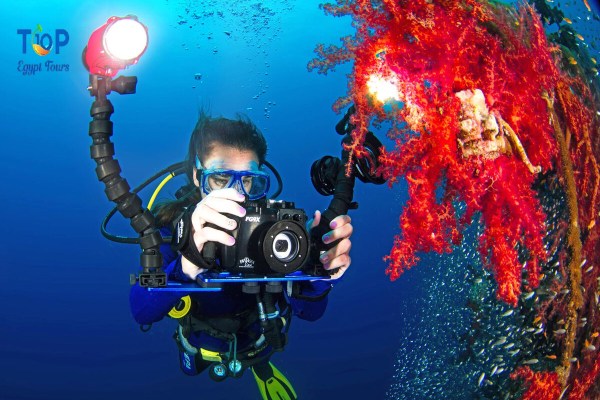Welcome to Top Ten Egypt Tours’ blog, where we explore the wonders of Egypt both above and below the surface! In this edition, we dive into the fascinating world of underwater photography. Whether you’re an avid diver, snorkeler, or simply captivated by the mysteries of the deep, capturing the beauty beneath the waves can be a rewarding and visually stunning experience. In this article, we’ll share essential editing tips to enhance your underwater images and bring out the vibrant colors and intricate details hidden beneath the surface.
Start with the Right Shot:
Before diving into editing, it’s crucial to begin with a well-composed and properly exposed photograph. Ensure your camera settings are optimized for underwater conditions, considering factors like natural light, water clarity, and the specific environment you’re shooting in.
White Balance Adjustment:
Underwater environments often introduce color casts due to the absorption of different wavelengths of light. To restore natural colors, adjust the white balance in your editing software. Tweak the temperature and tint settings until you achieve a more accurate representation of the underwater scene.
Correct Exposure and Contrast:
Underwater images can sometimes appear washed out or lack contrast. Adjust the exposure and contrast levels to bring out the details in both the highlights and shadows. Be mindful not to overdo it; aim for a balanced and natural look.
Enhance Vibrancy and Saturation:
Bring out the vibrant colors of the underwater world by selectively enhancing the saturation of specific hues. This can make the blues of the water pop, the greens of the coral reefs more vivid, and the array of marine life more captivating.
Focus on Details:
Underwater scenes are often rich in intricate details, from the texture of coral to the patterns on marine life. Use sharpening tools selectively to enhance these details without introducing noise. Be subtle with your adjustments to maintain a realistic and visually pleasing result.
Remove Backscatter and Unwanted Elements:
Backscatter, those tiny particles suspended in the water, can detract from the clarity of your underwater images. Use the spot healing or clone stamp tool to remove unwanted distractions and improve the overall cleanliness of your photographs.
Utilize Filters for Depth and Clarity:
Consider using color correction filters both during your dive and in post-processing to compensate for the loss of certain wavelengths underwater. These filters can enhance visibility and bring back the natural colors that might be absorbed by the water.
Experiment with Creative Effects:
While maintaining a natural look is crucial, don’t be afraid to experiment with creative effects to add a unique touch to your underwater images. Try subtle vignettes, soft glows, or even black-and-white conversions to evoke different moods.
Editing underwater images requires a delicate touch to preserve the natural beauty of the underwater world while enhancing the visual appeal. By following these editing tips, you can take your underwater photography to new depths, creating stunning images that showcase the incredible marine life and landscapes Egypt has to offer. Dive in, explore, and capture the magic beneath the waves with Top Ten Egypt Tours!



Comment (0)